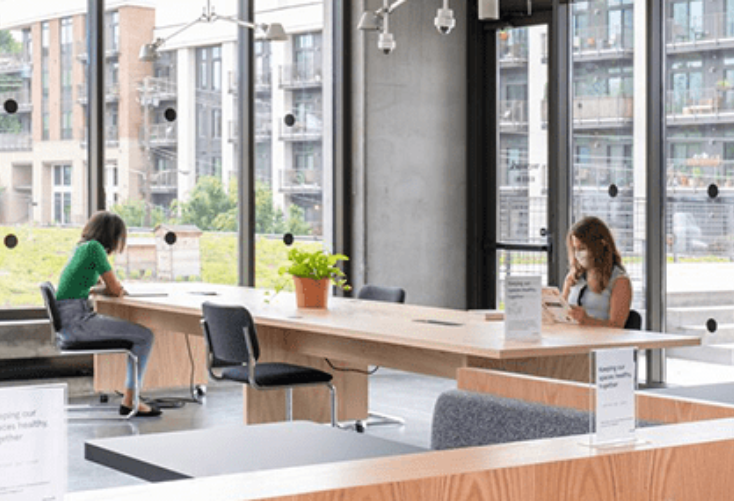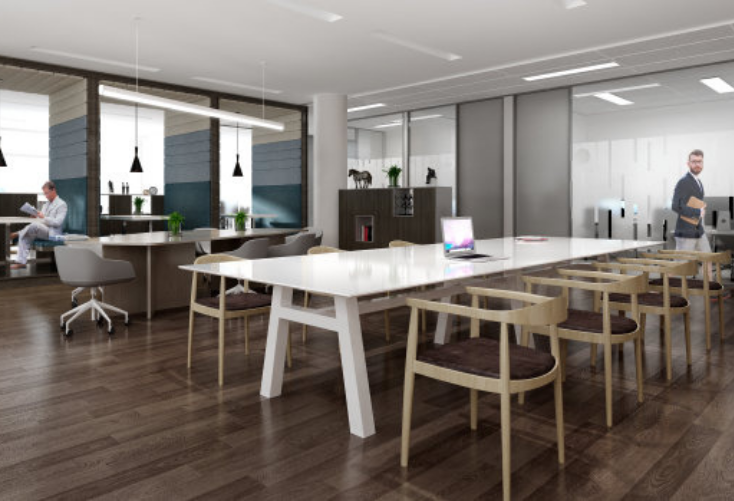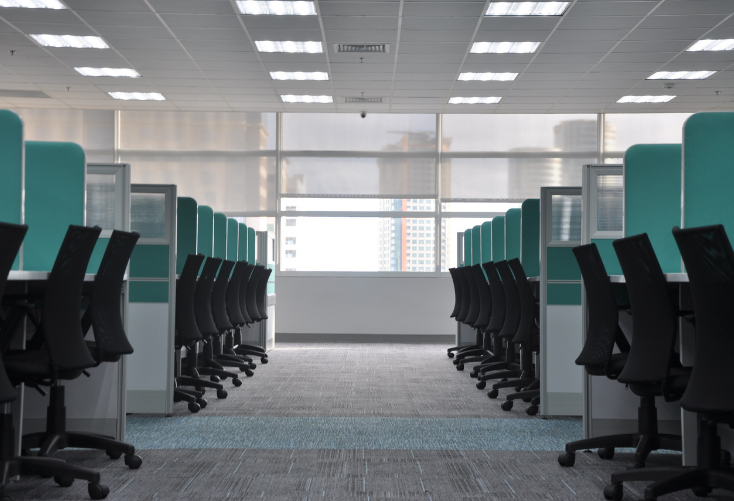Hand selected flexible workspace news from the most reliable sources to keep you ahead of the pack. We find all the latest news, so you don’t have to. Morning and afternoon updates. Stay in the know.
Here’s what you need to know today:
- Is Workaholism Hurting Productivity? NEW
- The Role Of HR In A Post-pandemic Workplace NEW
- How To Bring Employees Back Into The Office NEW
- IWG Signs First Australian Franchise Deal
- Will Ongoing Workplace Transformations Stick?
- Addressing The Negative Impacts Of Remote Working
Is Workaholism Hurting Productivity?
Data analysis conducted by the Madison Business Review has revealed that working too much can lead to poor employee mental health, thus hindering productivity.
The research viewed the average of hours worked each week by full-time workers across 37 countries and the impact that had on GDP output per person. This revealed that countries who had longer work weeks were less productive.
Workers who are experiencing burnout could not only bring down overall productivity, but companies also increase the risk of losing their top talent. That is why it is essential for business leaders to identify when the quality of work starts slipping for employees, and remedy the issue to avoid further damage.
While the ideal work week ranges from 37 to 41 hours, it is important to also look at how a country’s work culture views asking for fewer hours. For instance, the average American works 41.5 hours per week with a nominal GDP per capita of $65,111. In comparison, countries in Northern Europe such as Switzerland and Denmark saw higher GDP per capita despite their shorter work weeks.
So is there a true correlation between the amount of hours employees work and economic growth in a country? While the smaller European countries saw higher GDP per capita, the US is still a world leader based simply on productivity output. Still, workaholism has been a source of increased mental health problems and turnover rates.
However, younger generations have increasingly demanded a boost in work-life balance, which could lead to higher retention, increased job satisfaction and even more productivity.

The Role Of HR In A Post-pandemic Workplace
Human resource leaders are facing challenges similar to those that followed the Great Recession as the way we conduct and view the workplace has completely transformed.
So what trends can we anticipate to stick around and push the evolution of business operations? For starters, the employee experience has become essential for business longevity and retaining talent. This is particularly necessary as people navigate their own wellness through these unprecedented times.
Additionally, expect to see an integration of technology and humanity. This balance is tricky as technology is a necessity in a remote workforce, but can make adding a human touch much more difficult.
That is where Employee Journey Maps can offer a lending hand. Mapping begins at the application process and ends when a worker leaves the company and makes it easy to identify important points of this journey for the worker and the company. Doing so can make it easier for businesses to find the “unwritten rules” for employees to follow.
It is up to organizations to communicate with their employees about the company’s overall mission and express how to work alongside new technology without sacrificing humanity.
Lastly, one of the key changes to the workplace now and in the future will be the need to be more flexible and agile. In order to obtain flexibility in the workplace, HR leaders need to look at employee skills that are necessary for this time of arrangement, such as communication, customer relations, teamwork and problem-solving. Although these types of skills were undoubtedly important prior to the pandemic, they are absolutely vital for a remote workforce.

How To Bring Employees Back Into The Office
Companies all over the world have successfully transitioned to operating remotely over the last several months, but this work arrangement has had a direct impact on productivity, collaboration and culture.
During this time, WeWork’s head of global corporate workplace transformation Lendy Krantz says the company has studied and taken the measures necessary to bring workers back into the office with new safety measures in place.
According to Krantz, business leaders and building managers should focus on two things when bringing workers back into the office — having an understanding of the CDC and local guidelines, and defining company philosophy when it comes to returning to the workplace.
“When we first started bringing our employees back, we wanted our approach to be phased, helping teams gradually transition. We wanted to make sure they had choices with how and when they returned,” said Krantz. “We achieved this by supporting them in using their nearest WeWork location. We knew from surveys that reducing commute time would make returning easier, especially if employees can walk or bike to their closest location.”
When companies begin drafting a plan to bring workers back into the office, leaders need to clearly communicate how these policies will happen in a safe and thoughtful manner.
WeWork has reduced the flow of workers coming into the office by staggering check-in times. The company has also set up temperature checks and sanitization stations in high-touch areas, like elevators. Additionally, Krantz suggests companies to de-densify their spaces and implement distancing measures between workstations.

IWG Signs First Australian Franchise Deal
IWG has signed its first franchise deal with the Adams Group in Australia to open 10 new coworking spaces under its Regus brand.
The Adams Group, which owns Queensland convenience store NightOwl Convenience, will see the Regus brand open locations across the state in Townsville, Cairns, Noosa, Mackay, Rockhampton, Gladstone, Bundaberg, Hervey Bay, the Sunshine Coast and Airlie Beach.
“The franchising or partnership route has been coming for a number of years,” said Damien Sheehan, country head for IWG Australia. “We’ve really just cemented that and started to roll that out more aggressively here in Australia.”
According to Mark Bhardwaj, head of partnership growth for IWG Australia and New Zealand, this model will allow the company to expand its footprint outside of big cities, without the use of its own capital or additional risk.
This news follows IWG’s challenging year of its occupancy falling by up to 30%, as well as inquiries for its services and products being cut by about half due to the ongoing pandemic.
However, Sheehan added that inquiries for their suburban centers have increased. Still, whether there will be a mass exodus from major cities is uncertain.
“I think it’s too early to tell, but what we absolutely know for sure is that no longer do companies have to try and source employees from within a 25-kilometre radius, and have them commute into a central hub … and that’s the biggest upside here,” said Sheehan.

Will Ongoing Workplace Transformations Stick?
Discussions around the role of the office in the workplace have gone from complete necessity, to massive uncertainty fueled by an unprecedented pandemic.
Changes to the workplace vary across the world — while 84% of French office workers are back at their desks, less than 40% of British workers are.
Major technology companies like Twitter have revealed that its workers will be able to work remotely indefinitely, while Netflix founder Reed Hastings has called remote working “a pure negative.”
One thing that is clear is the technological transformation the pandemic has forced businesses to undergo. Now, technology-fueled companies could inevitably become more flexible and agile. However, this shift can be risky to company culture.
Prior to the pandemic, flexible offices took up just under 5% of the global market as companies were hesitant to adopt any type of flexible work options. Now that a huge portion of the world’s workforce has worked remotely at least some of the time, economies have proven that they can continue operating virtually.
For instance, civil courts are being run virtually, while banks have identified ways to confirm the identity of customers without them entering a branch.
So how many of these changes can we expect to stick around even after a vaccine is available to the general public? One of the most common predictions is the idea of an “optional office” that falls in line with a hybrid work arrangement. This allows employees to choose to come into the workplace for a few days out of the work week.

Addressing The Negative Impacts Of Remote Working
Millions of workers have proven that they can work from home comfortably, and while this arrangement has its own benefits, business leaders may not be doing enough to offset the negative impact of remote working.
The first step would be to actually identify the downsides of remote working. Are employees fully equipped with the tools they need to operate at home? Do they have access to reliable connectivity? There are several aspects of remote working that can go wrong, and employers need to ensure that workers are thoroughly supported.
The reality is many businesses were forced to transition to remote working with little to no preparation in terms of technology implementation, data security and IT, which can contribute to added stressors for employees. This transition compared to the ability to choose when to work from home has undoubtedly added a sense of urgency and pressure to the work day.
A study from Prof. Stephen Böhm and colleagues at the University of St. Gallen, digitalization increases emotional exhaustion by nearly 15%.
So what can business leaders do to create a flexible work environment that makes this transition more seamless? It starts with leadership that communicates clearly and trusts workers, supports employees’ remote office environments and continues to engage with workers on both a professional and a personal level.



 Dr. Gleb Tsipursky – The Office Whisperer
Dr. Gleb Tsipursky – The Office Whisperer Nirit Cohen – WorkFutures
Nirit Cohen – WorkFutures Angela Howard – Culture Expert
Angela Howard – Culture Expert Drew Jones – Design & Innovation
Drew Jones – Design & Innovation Jonathan Price – CRE & Flex Expert
Jonathan Price – CRE & Flex Expert













